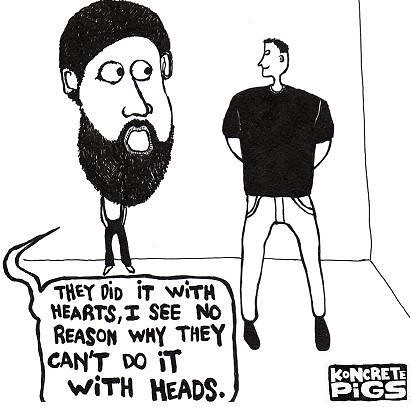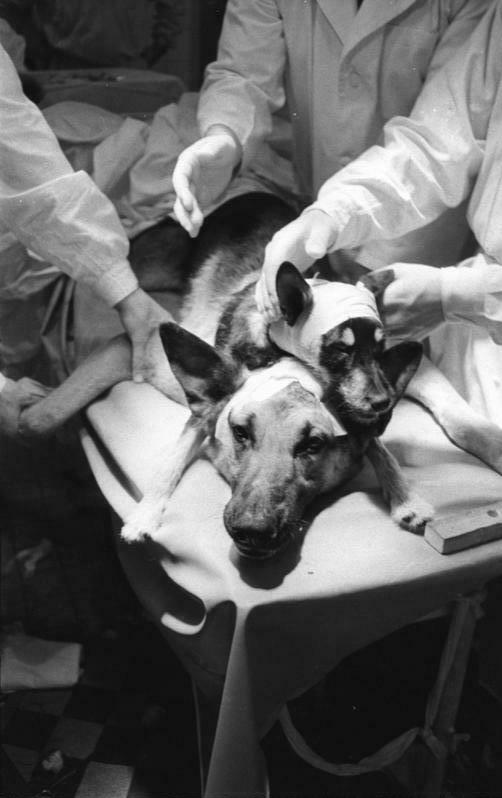
If you could have your head transplanted onto anyone’s body, would you do it? Who would you choose? Sergio Canavero believes that in 2 years time these questions will no longer be simply hypothetical. He proposed the idea of human head transplants at this year’s annual conference of American Academy of Neurological and Orthopaedic Surgeons.
Sergio Canavero of the Turin Advanced Neuromodulation Group in Italy is convinced that advances in technology will overcome the biggest challenges that human head transplantation currently faces by 2017. The aim of the transplants will be to prolong the lives of people whose muscles and nerves have degenerated or whose organs have been conquered by cancer.
“This is why I first spoke about the idea two years ago, to get people talking about it,” Canavero says. “If society doesn’t want it, I won’t do it. But if people don’t want it in the US or Europe, that doesn’t mean it won’t be done somewhere else. I’m trying to go about this the right way, but before going to the moon, you want to make sure people will follow you.”
 Head transplants have actually been around for quite a while. The first attempt was made in 1954 by a Soviet surgeon, called Vladimir Demikhov. The head and the forelegs of a puppy were grafted onto the back of a larger dog. All dogs survived for no more than six days. The first successful head transplant was performed in the 1970s by Robert White at Case Western Reserve University School of Medicine in Cleveland, Ohio. He grafted the head of one monkey onto the body of another. However, he did not manage to fuse the spinal cords together so the monkey was not in control of its body and could only breathe with artificial assistance. It lived for 9 days before its immune system rejected the transplanted head.
Head transplants have actually been around for quite a while. The first attempt was made in 1954 by a Soviet surgeon, called Vladimir Demikhov. The head and the forelegs of a puppy were grafted onto the back of a larger dog. All dogs survived for no more than six days. The first successful head transplant was performed in the 1970s by Robert White at Case Western Reserve University School of Medicine in Cleveland, Ohio. He grafted the head of one monkey onto the body of another. However, he did not manage to fuse the spinal cords together so the monkey was not in control of its body and could only breathe with artificial assistance. It lived for 9 days before its immune system rejected the transplanted head.
Sergio Canavero has published a summary of his technique in Surgical Neurology International. Firstly, the recipient’s head and the donor’s body are cooled down so that the lifetime of cells without oxygen is maximized. Then the tissue around the neck is dissected. Muscles and blood vessels are sutured. The spinal cords are cleanly cut and joined together by injecting them with polyethylene glycol which promotes the entwining of fat cell membranes. Finally electrodes are implanted in the brain to strengthen nerve connections by electric stimulation. The recipient will be kept in comma for three or four weeks to prevent any movement that could disrupt the spinal cord. It is expected that the recipient will be able to move all limbs, feel their face and speak with the same voice after one year of physiotherapy.
30-year-old Valery Spiridinov from Russia has volunteered to undergo the first head transplantation. He is suffering from a terminal genetic disorder, called Werdnig-Hoffman muscle wasting disease. He shared: “If I don’t try this chance, my fate will be very sad. With every year my state is getting worse.”
 Sergio Canavero’s proposal has raised a lot of concerns among scientists with regards to safety and ethical implications. Although the head transplants are intended to increase the lifetime of people, suffering from genetic disorders or cancer, others could take advantage of the developed procedure and use it as cosmetic surgery.
Sergio Canavero’s proposal has raised a lot of concerns among scientists with regards to safety and ethical implications. Although the head transplants are intended to increase the lifetime of people, suffering from genetic disorders or cancer, others could take advantage of the developed procedure and use it as cosmetic surgery.
Head transplants are an interesting concept that has been explored by numerous fiction works. However, the reality of grafting someone’s head onto a deceased person’s body is complex – not only surgically. Could you spend the rest of your life in a dead stranger’s body? Could you imagine donating the body of a deceased relative to another person? Perhaps it will not be the lack of human knowledge that will stand in the way of this procedure, but the multitude of human emotions.
![First Human Head Transplant If you could have your head transplanted onto anyone’s body, would you do it? Who would you choose? Sergio Canavero believes that in 2 […]](/wp-content/uploads/2015/05/4049854268_ea9ea81631-411x300.jpg)